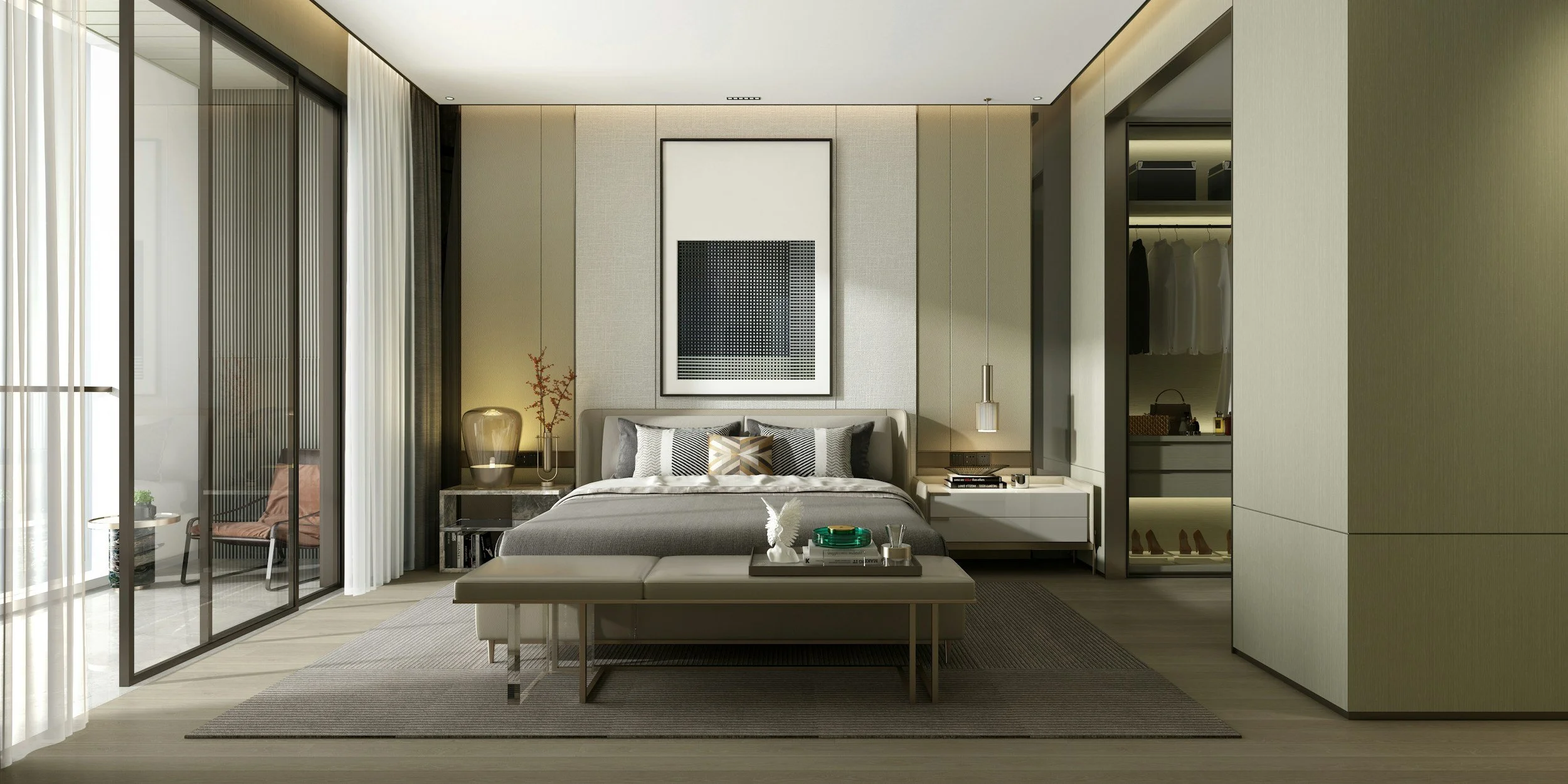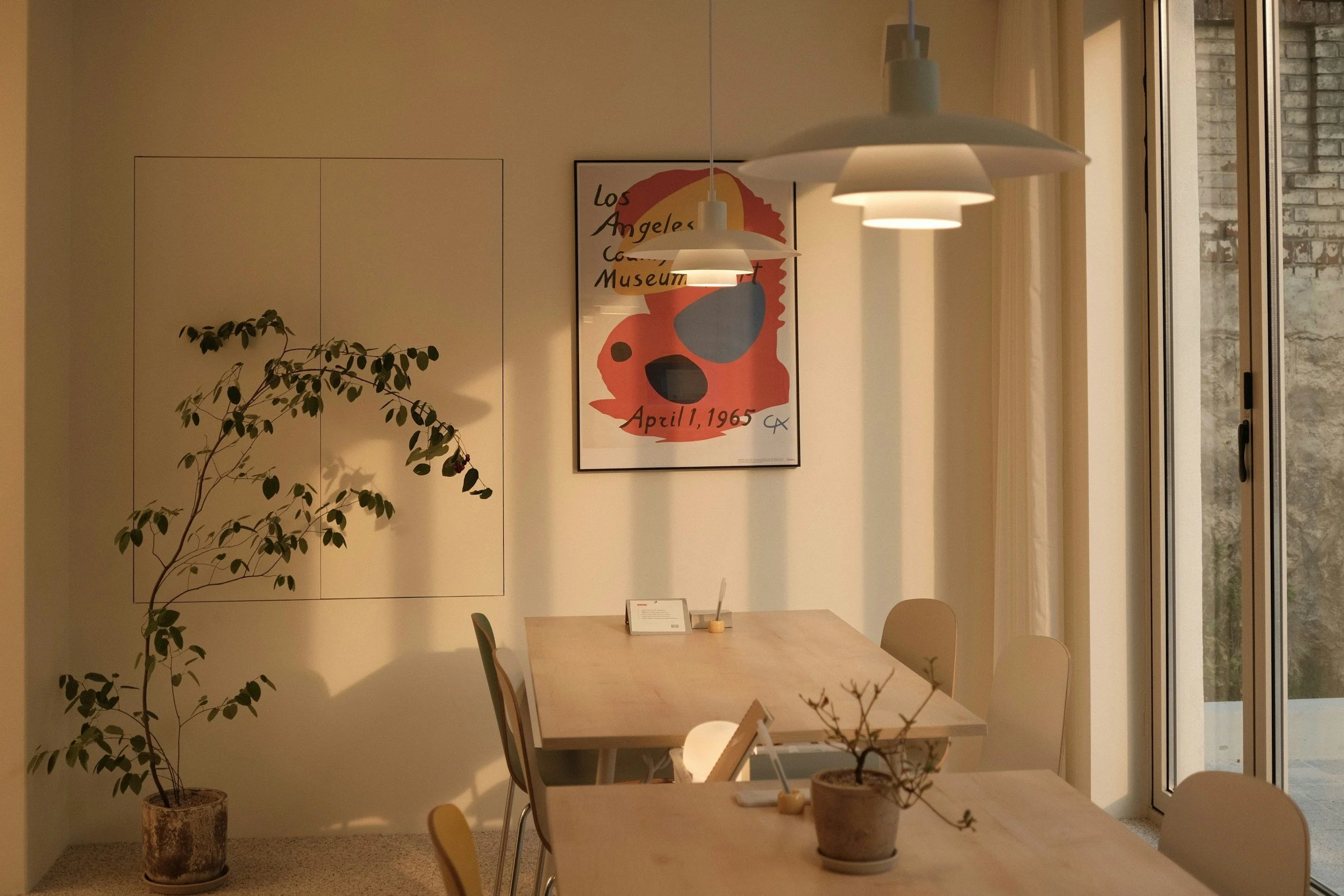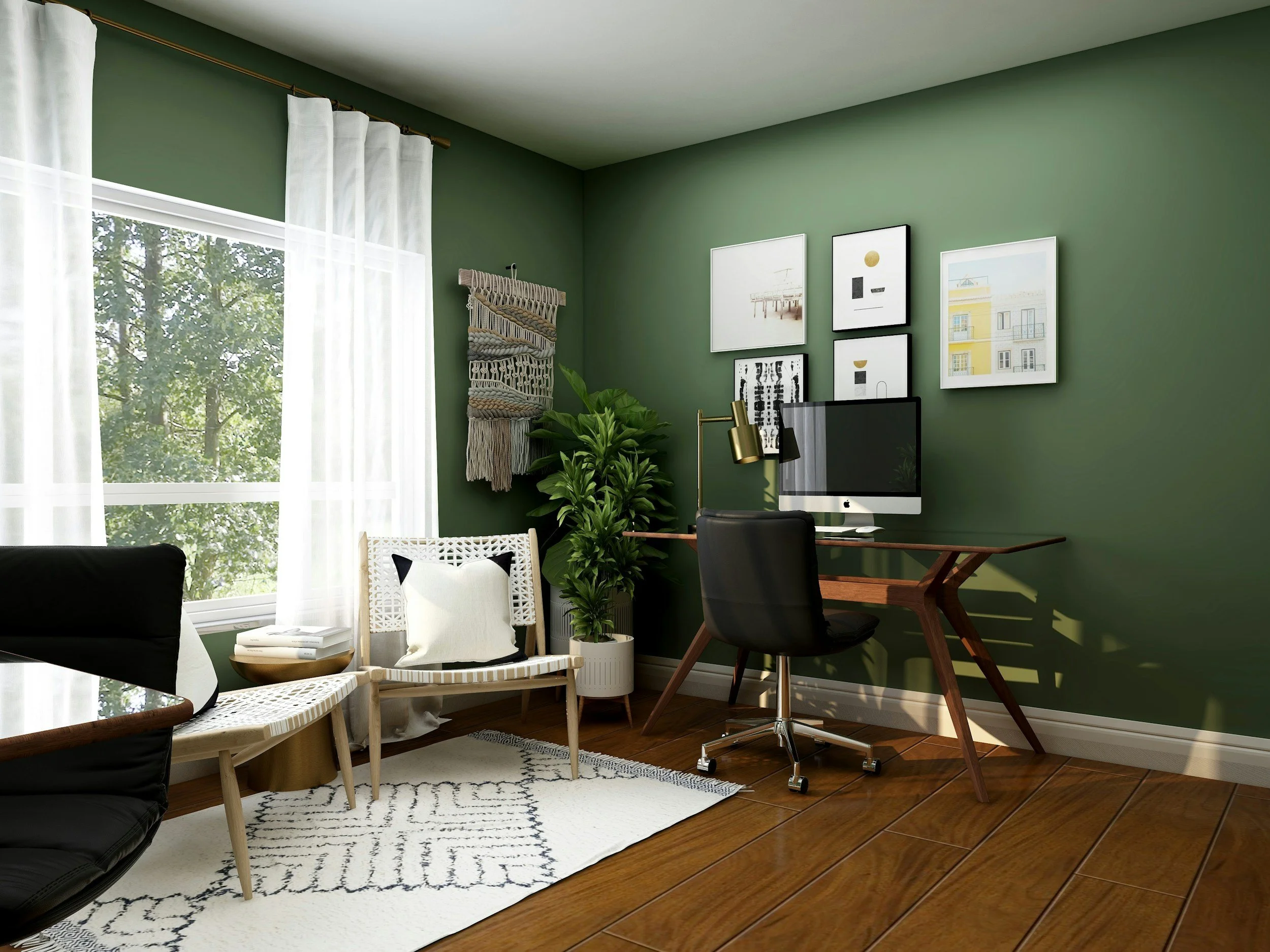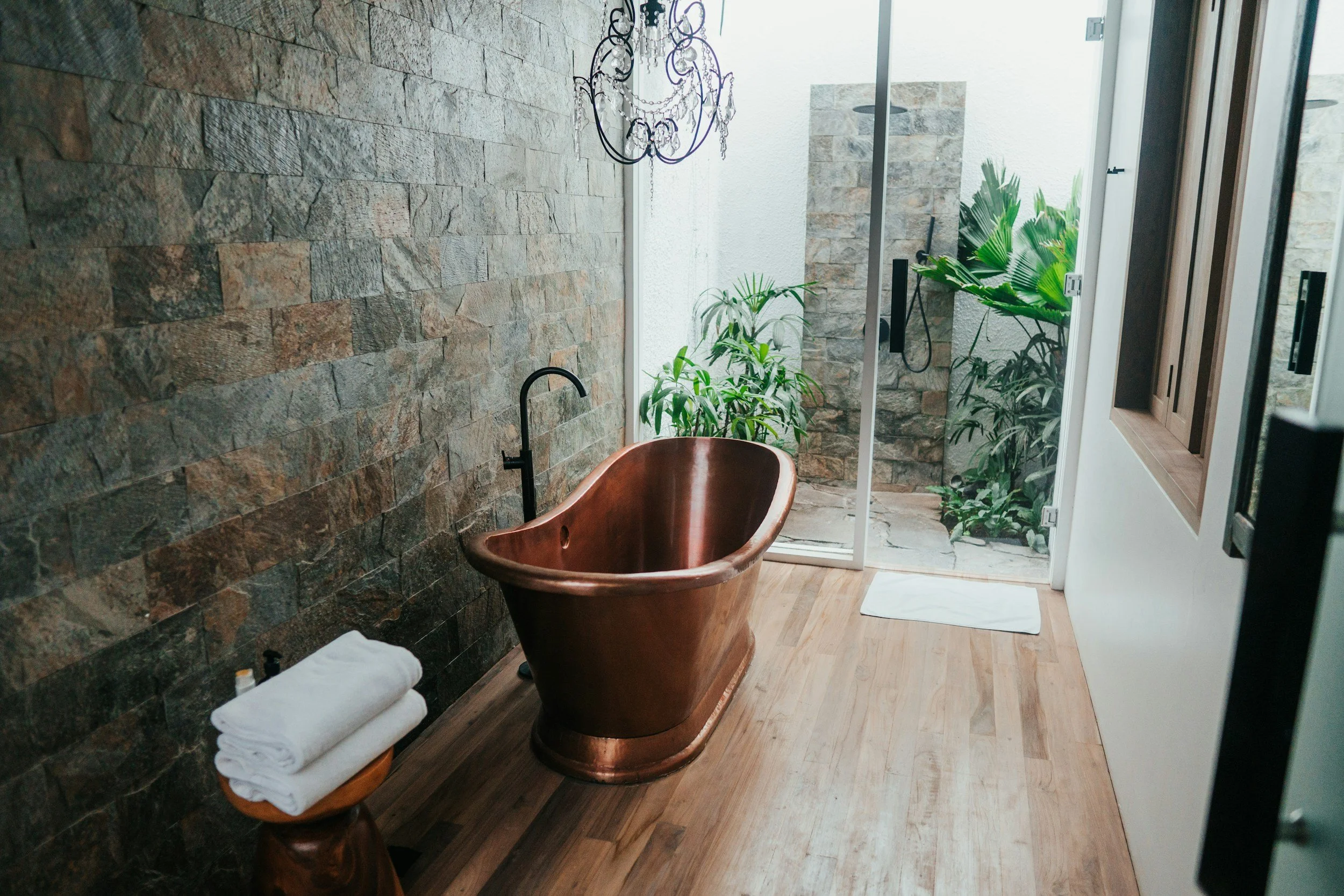What is Minimalist Furniture? Key Concepts
Minimalism has evolved from being just a trend to becoming a way of life for many. The philosophy behind minimalism isn't just about having fewer possessions; it's about choosing quality over quantity, embracing simplicity, and creating a calm, clutter-free space that encourages focus and mindfulness.
When it comes to minimalist furniture, the idea is to focus on pieces that are not only functional but also aesthetically pleasing in their simplicity.
In this blog post, we’ll explore essential minimalist furniture for every room in your home, helping you build a serene and intentional living space.
What is Minimalist Furniture?
Minimalist furniture is all about simplicity and purpose. It’s designed with clean lines, neutral colors, and a “less is more” approach.
Rather than flashy designs or excessive ornamentation, minimalist furniture focuses on what’s essential—practical, visually calming, and effortlessly stylish pieces. Each item has a clear function, often with hidden storage or versatile features that help keep your space clutter-free.
The goal is to create a spacious, serene, and timeless environment. Minimalist furniture isn’t just a style, it’s a way to live more intentionally by surrounding yourself with quality pieces that truly add value to your everyday life.
Key Characteristics of Minimalist Furniture
The key characteristics of minimalist furniture revolve around simplicity, functionality, and timeless design, creating spaces that are both visually pleasing and highly practical.
Simplicity in Design
Minimalist furniture features simple, unembellished designs that emphasise function and form. The goal is to create pieces that are visually light and free from excessive details.
Think of furniture with clean, straight lines, smooth surfaces, and an overall understated appearance.
Focus on Functionality
Minimalist furniture is designed with a “less is more” philosophy, prioritising functionality above all else. Each piece serves a clear purpose and often includes clever storage solutions to help maintain a clutter-free environment.
For example, a minimalist coffee table might have a hidden storage compartment or shelves integrated discreetly into the design.
Quality Over Quantity
In minimalism, the focus shifts from having many items to having fewer, higher-quality pieces. Minimalist furniture is typically crafted from durable, high-quality materials such as solid wood, metal, or stone.
Investing in fewer pieces of better quality not only reduces clutter but also ensures longevity.
Neutral and Muted Color Palette
The color scheme of minimalist furniture is usually neutral, with shades like white, black, gray, beige, and muted earth tones. These colors create a calm, cohesive look that allows each piece to blend seamlessly with the overall decor.
Bright colors and bold patterns are typically avoided to maintain a serene and harmonious space.
Emphasis on Space and Openness
Minimalist furniture is often designed with space efficiency in mind. Furniture pieces with slender legs, open frames, or floating designs are common, as they give the illusion of more space and maintain an airy feel.
The aim is to create a spacious room, even if the furniture pieces are relatively few.
Timeless Aesthetics
One of the core ideas behind minimalist furniture is timelessness. Minimalist pieces are designed to withstand changing trends, focusing on classic shapes and versatile designs.
This timelessness ensures the furniture remains relevant and appealing for years, making it a long-term investment.
Benefits of Minimalist Furniture
The benefits of minimalist furniture go beyond aesthetics, offering a lifestyle that promotes simplicity, organisation, and a sense of calm in your home.
Reduced Clutter: Minimalist furniture is inherently uncluttered and often includes hidden storage options. This reduces visual chaos and makes it easier to maintain an organised living space.
Calm and Serenity: The absence of visual noise, along with the focus on simplicity, creates a peaceful environment. This is particularly beneficial in spaces like bedrooms and living rooms, where relaxation is key.
Versatility: Due to its neutral palette and simple design, minimalist furniture can be easily integrated into various interior styles, from modern and Scandinavian to industrial and even bohemian, with the right accents.
Enhanced Focus: In spaces like home offices, minimalist furniture helps eliminate distractions, fostering better concentration and productivity. A clutter-free workspace is often linked to increased efficiency and mental clarity.
The Living Room: Where Function Meets Comfort
The living room is often the heart of the home, where you gather with family and friends or relax after a long day. In a minimalist home, it is important to keep this space clean, comfortable, and purposeful.
Here are the critical pieces of furniture you should consider:
1. The Minimalist Sofa: A Functional Centerpiece
The sofa is typically the largest piece of furniture in the living room, making it the most critical element in establishing a minimalist style. The goal is to choose a sofa that’s not only functional and comfortable but also simple in design.
Look for a sofa with clean lines, neutral colors, and a low profile. Sofas with thin legs create a sense of openness, which is essential in minimalist decor.
Materials like linen, cotton, and leather are popular choices for a minimalist sofa. Neutral tones such as beige, gray, or muted earth tones work best, as they are versatile and create a calming effect.
Remember, the sofa should be more than just aesthetically pleasing; it needs to be durable and comfortable enough for daily use.
2. The Coffee Table: Form and Function Combined
A minimalist coffee table serves as a functional surface and a design statement. Opt for a coffee table with a sleek silhouette, such as a simple rectangular or circular design. Materials like wood, metal, or glass keep the look uncluttered.
If you prefer extra storage, consider tables with open shelving underneath to maintain the airy feel while providing space for books, magazines, or remote controls.
In a minimalist living room, the coffee table should remain mostly clear. A decorative item, like a ceramic bowl, a plant, or a carefully chosen book, can serve as an accent without overpowering the room's simplicity.
3. The Media Console: Streamlined and Subtle
Entertainment units are often bulky, so choosing the right one is crucial in a minimalist space. A media console should be sleek, with clean lines and subtle detailing. Look for a low-profile design, allowing it to blend seamlessly with the rest of the room. A floating media console, for example, can create the illusion of more space.
If possible, select a unit that includes storage to hide unsightly cables, remote controls, and other tech accessories. Keeping clutter out of sight is one of the main principles of minimalist living, and the right media console helps you achieve this effortlessly.
4. Accent Chairs: Simple Yet Inviting
When selecting additional seating, focus on chairs with a minimalist design that offers comfort without unnecessary embellishments. Scandinavian-style armchairs, with their smooth curves and ergonomic support, are an excellent choice. Consider materials like light wood or metal, with upholstery in neutral tones.
The key is to limit the number of accent chairs to avoid overcrowding the room. One or two carefully placed chairs that complement your sofa are enough to create a cosy, inviting atmosphere without overwhelming the space.
5. The Minimalist Rug: Subtle Texture
Though not a piece of furniture, a rug plays a significant role in defining the space and tying your minimalist decor together. Choose a rug with a simple pattern or solid color, and stick to natural materials like wool, cotton, or jute.
The rug size should suit your room's layout. It is typically large enough to accommodate the front legs of your sofa and chairs, grounding the seating area.
Summary
For a minimalist living room, select a few essential pieces that are versatile, functional, and aesthetically aligned with minimalist principles. The goal is to create a harmonious, open, uncluttered, and inviting space.
The Bedroom: Where Serenity Meets Simplicity
The bedroom is a sanctuary for rest and relaxation, making it ideal for embracing minimalism. The furniture you choose here should promote tranquility and a sense of calm.
1. The Bed
The bed is the centerpiece of any bedroom, and in a minimalist design, it should be as simple as possible.
Platform beds, which sit low to the ground, are a popular choice in minimalist bedrooms due to their clean lines and understated look. Many minimalist beds have no headboard or feature a simple, unembellished headboard in wood or fabric.
When choosing bedding, opt for soft, high-quality materials in neutral colors like white, gray, or beige. The bed should look inviting but not fussy. A well-made bed with just a few pillows and a cosy duvet is all you need to convey comfort and style.
2. Nightstands
Nightstands should be simple, with clean lines and minimal hardware. Look for options that have built-in storage like a drawer or open shelf for keeping essentials close at hand but out of sight. Avoid cluttering the surface; a minimalist nightstand might hold just a lamp, a book, and perhaps a small plant or a piece of decor.
Floating nightstands are another excellent option in a minimalist bedroom, as they keep the floor space open and maintain the room’s airy feel.
3. The Dresser
In a minimalist bedroom, storage is essential but should never compromise the room’s serene atmosphere. Choose a dresser with a clean, streamlined design, and stick to light or neutral colors that blend seamlessly with the room. Dressers with flat fronts and simple, discrete handles or touch-to-open mechanisms are ideal.
To avoid visual clutter, the dresser’s surface should be kept mostly clear, with only a few carefully chosen decorative items, such as a vase, a framed photograph, or a candle.
4. Wardrobe or Closet
In a minimalist lifestyle, less is more, and this is especially true in your wardrobe. However, everyone needs space to store their clothing. If your bedroom includes a wardrobe, choose one with smooth, flat doors and a discreet appearance. Built-in wardrobes that blend with the walls are perfect for maintaining the minimalist aesthetic.
Make sure the inside of your closet is well-organised and uncluttered. Consider adding shelves or drawer units to maximise space while storing everything neatly. Minimalism is as much about what’s inside the furniture as what’s visible on the outside.
5. The Reading Chair
If you have space, adding a single armchair in a corner can create a cosy reading nook while maintaining minimalist principles. Choose a chair with a simple design and neutral upholstery, and place it near a small table or floor lamp for a complete setup.
Summary
In a minimalist bedroom, the focus should be on quality over quantity. Each piece of furniture should serve a clear purpose, contribute to the room’s serene atmosphere, and enhance its overall simplicity.
The Dining Room: Where Style Meets Functionality
The dining room is a space for gathering, whether for daily meals or special occasions.
Minimalist dining rooms emphasise function and aesthetics equally, creating a warm and inviting environment for eating and socialising.
1. The Dining Table
A minimalist dining table should have a clean, unadorned design that allows the quality of the materials to shine.
Solid wood tables are a classic choice, particularly in light oak, walnut, or ash. For a more contemporary look, consider tables with a metal or glass top.
Rectangular and round tables are common in minimalist spaces, as they offer versatility in both function and layout. The focus should be on simplicity—avoid tables with ornate carvings or elaborate bases.
2. Dining Chairs
When choosing dining chairs, look for designs that complement your table without overpowering it. Scandinavian-style chairs, known for their sleek lines and ergonomic comfort, are an excellent choice. Chairs made of natural wood or metal with simple upholstery work best in a minimalist dining room.
Consider stackable or lightweight chairs if you’re working with a smaller space, allowing you to easily adapt your dining area when needed.
3. Sideboards and Buffets
A sideboard or buffet is useful for storing dining essentials like dishes, glassware, and linens. In a minimalist dining room, this piece should be simple and functional, with a low-profile design that doesn’t draw too much attention. Look for sideboards with smooth surfaces, flat fronts, and minimal hardware.
Keep the surface of your sideboard or buffet clear, except for perhaps one or two decorative items, such as a vase with fresh flowers or a piece of art. This maintains the room’s clean, clutter-free feel.
4. Lighting
Lighting is a key element in any dining space. In a minimalist dining room, a single statement pendant light or a cluster of simple hanging lights works well. Choose designs that are geometric and unobtrusive, with a focus on quality materials like metal, glass, or wood.
Summary
A minimalist dining room should strike a balance between function and style. Choose furniture that is simple, sturdy, and elegant, allowing the space to feel open, welcoming, and comfortable.
The Home Office: Where Focus Meets Functionality
With remote work becoming increasingly common, the home office is now a vital part of many households. Minimalism in a home office isn’t just about aesthetics—it’s about creating a space that fosters focus, productivity, and clarity of thought.
1. The Desk
The desk is the cornerstone of any home office. In a minimalist setup, the desk should be simple, with clean lines and minimal storage. A desk with an open frame or slim legs helps maintain a sense of openness in the room. If you need additional storage, opt for a desk with built-in drawers that blend seamlessly with the overall design.
Standing desks or convertible sit-stand desks are also popular in minimalist home offices, as they prioritise health and ergonomics while maintaining a clean, modern look.
2. The Office Chair
Comfort is key when selecting an office chair, but that doesn’t mean compromising on style. Look for chairs with a simple, ergonomic design that offers lumbar support and promotes good posture. Neutral colors like black, gray, or white are ideal, ensuring the chair blends seamlessly with the minimalist aesthetic.
Mesh chairs with clean frames or fully upholstered options with a low-profile backrest are excellent choices for a minimalist office.
3. Storage Solutions
In a minimalist home office, clutter is the enemy of productivity. Choose storage solutions that are both functional and discreet. Floating shelves, wall-mounted cabinets, or a slim filing cabinet can help keep documents and office supplies organised without overwhelming the space.
The key is to keep surfaces clear and store items out of sight whenever possible. This creates a visually calming environment where you can focus on work without distractions.
4. Decor
Minimalist decor in a home office should be purposeful. A few pieces of wall art, a small indoor plant, or a single decorative object can add personality without cluttering the space. When choosing the decor, prioritise items that inspire you or contribute to the room’s overall function.
Summary
A minimalist home office is all about creating a space that supports productivity and focus. Each piece of furniture should be carefully chosen for its functionality, simplicity, and contribution to a clean, distraction-free environment.
The Kitchen: Where Efficiency Meets Elegance
The kitchen is often one of the busiest rooms in the home, so minimalist design here is all about efficiency and ease of use. The goal is to streamline the space without sacrificing functionality.
1. Cabinets
In a minimalist kitchen, cabinets should have a sleek, flat-front design with little to no visible hardware. Handle-less cabinets with push-to-open mechanisms or integrated pulls are ideal for maintaining clean lines. Neutral colors like white, gray, or light wood help the kitchen feel open and airy.
2. The Kitchen Island
If you have a kitchen island, keep it as simple as possible. The island should be functional, offering additional workspace and possibly extra storage without becoming a clutter magnet.
Avoid overcrowding the surface with appliances or decor; instead, keep it mostly clear, with just one or two essentials like a cutting board or fruit bowl.
3. Dining Area
In homes where the kitchen includes a dining area, choose a small table with a minimalist design, such as a round or square table with a thin profile. Pair it with chairs that match the simplicity of the space—lightweight, stackable chairs or simple wooden stools are ideal.
4. Open Shelving
Open shelving is popular in minimalist kitchens, allowing you to display select dishes, glassware, or pantry items in a way that adds to the aesthetic. The key is to be intentional about what you display—less is more. Stick to a neutral color palette and avoid overloading the shelves to maintain a tidy, organised look.
Summary
A minimalist kitchen is efficient, clean, and functional. All furniture and storage should contribute to the room’s streamlined appearance, making it a pleasure to use and easy to maintain.
The Bathroom: Where Cleanliness Meets Simplicity
In the bathroom, minimalism creates a calming, spa-like atmosphere that helps you start and end your day with ease. Here’s how to achieve it:
1. Vanity
The bathroom vanity should have a clean, straightforward design with plenty of storage to keep toiletries out of sight. Floating vanities are popular in minimalist bathrooms as they keep the floor space open and create a sense of lightness. Choose materials like wood, stone, or marble in neutral tones.
2. Storage
Bathroom storage should be minimal yet effective. Built-in cabinets, recessed shelves, or wall-mounted storage units are perfect for keeping essentials organised without adding visual clutter. Make use of drawer dividers and organisers to ensure everything has its place.
3. Fixtures
Opt for sleek, modern fixtures in finishes like brushed nickel, matte black, or stainless steel. The simpler, the better—look for faucets and showerheads with clean lines and geometric shapes.
Minimalist bathrooms often feature wall-mounted faucets, which contribute to the streamlined look.
4. Decor
Minimalist bathroom decor should be subtle and purposeful. A small indoor plant, a neatly folded stack of towels, or a single piece of art can add warmth without overpowering the space. Stick to neutral colors and avoid busy patterns.
Summary
In a minimalist bathroom, less is truly more. Focus on keeping surfaces clear, storage hidden, and design elements simple to create a tranquil, spa-like environment.
Embrace Minimalist Furniture Across Your Home
Creating a minimalist home doesn’t mean sacrificing comfort or style—it’s about carefully selecting furniture that meets your needs while maintaining a clean, cohesive look.
By focusing on quality over quantity, choosing simple, functional designs, and eliminating unnecessary clutter, you can create a living space that is both beautiful and purposeful.
Whether you’re furnishing your living room, bedroom, dining room, home office, kitchen, or bathroom, minimalist design principles can help you build a home that’s visually stunning and a true reflection of intentional living.
Contact us for more information on minimalist furniture.








